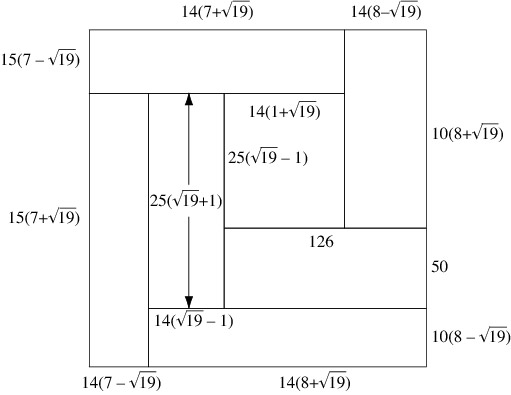square

Blanche's dissection.
A square is a quadrilateral with four equal sides that meet at right angles.
To square something is to multiply it by itself. To take the square root is the reverse process. A square number is the square of a whole number. A well known formula for the difference of squares is a 2 – b 2 = (a + b)(a – b). This formula enables some otherwise difficult calculations to be done easily in the head. For example, 43 × 37 = (40 + 3)(40 – 3) = 402 – 32 = 1600 – 9 = 1591.
Squaring a whole number (integer) gives an integer result, but taking the square root of a whole number often does not. And, as the Greek mathematician Pythagoras and his coworkers discovered, there is not always a rational number expressible as the ratio of two integers) that when squared will equal a particular integer. The square root of 4 is 2 (both integers), but the square root of 2 is somewhere between 1.4142 and 1.4143. The square root of 2 cannot be computed exactly and is called an irrational number.
Blanche's dissection
Blanche's dissection is the simplest dissection of a square into rectangles of the same areas but different shapes. It is composed of seven pieces; the square is 210 units on a side, and each rectangle has an area of 2102/7 = 6300.


